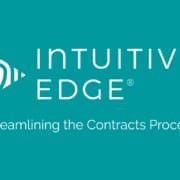The Crucial Role of Due Diligence and Contract Transition in Pharmaceutical M&A
In the high-stakes world of pharmaceutical divestitures, mergers and acquisitions (M&A), the due diligence and contract transition phases are pivotal. These stages are filled with unique challenges and nuances that can significantly impact the success of an acquisition or divestiture. Understanding these nuances is essential for navigating the pharmaceutical landscape effectively and ensuring a smooth transition and integration of assets.
The Importance of Due Diligence in Pharmaceutical M&A
Due diligence in pharmaceutical M&A goes beyond financial audits and legal compliance checks. It involves a comprehensive review of the target company’s drug pipeline, intellectual property (IP) portfolio, regulatory approvals, clinical trial data, and market potential of products. This deep dive helps acquirers to assess not just the current value but also the future potential and risks associated with the target’s assets. Critical issues such as patent cliffs, regulatory hurdles, and market exclusivity periods must be evaluated to make informed decisions.
Contract Transition: A Key to Seamless Integration
After the due diligence phase, successful contract transition becomes crucial. This process involves the transfer of numerous agreements that are central to the pharmaceutical industry, including licensing agreements, research and development (R&D) contracts, manufacturing and supply agreements, and distribution deals. Each of these contracts may contain specific clauses and obligations that could significantly impact the combined entity’s operations and financial health.
Nuances in Pharmaceutical Contract Transitions
1. Intellectual Property Rights: Ensuring the seamless transfer of IP rights, including patents, trademarks, and proprietary technology, is crucial. Any oversight in transferring these rights can lead to legal battles and loss of competitive advantage.
2. Regulatory Compliance: Pharmaceutical products are subject to rigorous regulatory scrutiny. Acquirers must ensure that all necessary regulatory approvals are in place and that ongoing clinical trials are compliant with regulatory standards. Contracts related to regulatory compliance should be meticulously reviewed and managed.
3. Supply Chain Agreements: The integrity of the supply chain is vital in the pharmaceutical industry. Transitioning manufacturing and supply agreements requires careful consideration of quality control, delivery timelines, and regulatory compliance aspects.
4. Partnership and Collaboration Agreements: Many pharmaceutical companies engage in partnerships for R&D and distribution. Understanding the obligations and benefits outlined in these agreements is key to maintaining fruitful partnerships post-acquisition.
5. Market Exclusivity and Pricing Agreements: Contracts detailing market exclusivity terms and pricing agreements for drugs can have significant financial implications. These agreements must be carefully assessed to understand their impact on revenue projections.
Conclusion
The complexities of due diligence and contract transition in pharmaceutical M&A highlight the need for specialized knowledge and meticulous attention to detail. Successfully navigating these phases can unlock significant value, ensuring the acquisition or divestiture not only meets regulatory standards and financial expectations but also enhances the combined entity’s market position. As the pharmaceutical industry continues to evolve, the importance of these processes in achieving successful M&A outcomes cannot be overstated.




